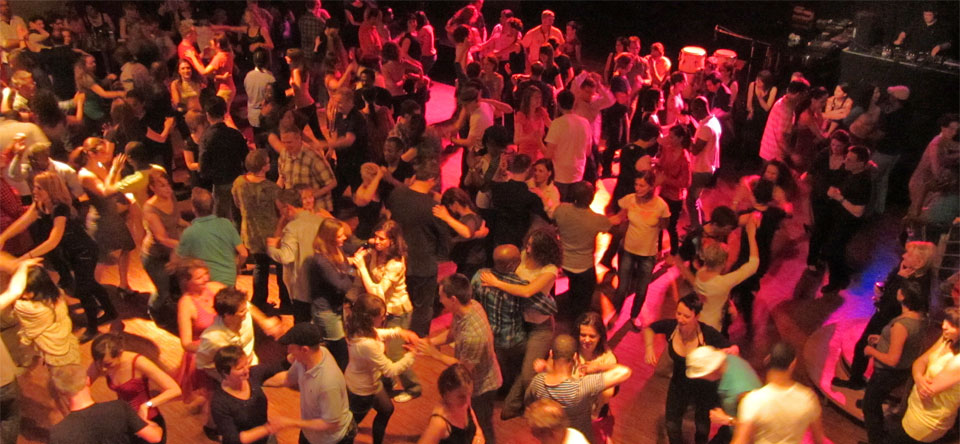The Buzz on Dance Fridays
Dance Fridays Things To Know Before You Buy
Table of ContentsIndicators on Dance Fridays You Need To KnowDance Fridays for DummiesDance Fridays Fundamentals ExplainedThe 20-Second Trick For Dance Fridays
Allow's think about Salsa dance and songs as a large Tree that appears like this: Salsa is danced world-wide while many technical aspects of the dance are the same throughout designs (6 steps over 8 beats danced on a quick-quick-slow or slow-quick-quick rhythm), there are a number of "hallmark" features of the major styles of Salsa that differentiate one from the various other.Couples getting involved in a Gambling establishment Rueda dance all steps in unison as called by a Leader. Distinguishing attributes of Cuban design salsa are round turn patterns (with "break back" steps on counts 1 and 5) as well as body language influenced by standard Afro-Cuban folkloric dancings. Distinguishing features of Cali style salsa fasts and complex maneuvering, danced with a strong hand hold connection between companions.
The beginnings of the style are a subject of dispute, but it is said that New york city style Salsa dancing came from the 1960's as a result of the influx of Latin American emigrants after the Cuban Transformation. Eddie Torres is the most popular New york city design dancer, being practically universally attributed with promoting the design to dance centres beyond New York.
The basic rhythm of "On-2" is slow-quick-quick. The "youngest" of the designs of Salsa, L.A. Style (some people have called it "West Shore" style) became preferred in the 1990's and has its origins in ballroom (Mambo, Swing and Cha, Cha, Cha). Transform patterns lead and comply with methods are heavily affected by these styles, with the Cross Body Lead being the cornerstone of the style.
Excitement About Dance Fridays
Design are execution of turn patterns and figures in the "slot", with the break actions on matters "1" and "5". While Salsa music has solid beginnings in Cuban, Colombian and Puerto-Rican folkoric customs, it can not be marked down that all Afro-Latin and Latin American cultures have actually contributed to contemporary Salsa songs as we understand it today.
It's feasible that due to political reasons the contribution of Afro-Cuban culture and heritage to contemporary Salsa in the 1960's and 70's is not widely identified, yet it can not be neglected the substantial contribution and impact of the "Queen of Salsa", Celia Cruz (salsa club san francisco). Many thanks to the internet and simplicity of accessibility to details, the popularity of Salsa music, dance and culture has actually spread like wildfire over the last 30 years and also then modern Salsa artists proceed to pay tribute to the Founding Papas and Mom of Salsa.
Today Salsa songs is produced, click site carried out and celebrated globally. In 2000 the influence of Latin American music and culture (not just Salsa) was identified by the National Academy of Recording Arts and Sciences in the United State and the Latin Grammy Awards were created. The Latin Grammy's have actually brought focus to the Salsa Legends and contemporary Salsa artists alike
The Dance Fridays Statements
distinguishing features of Salsa music are: 4/4 time signature, Kid Clave and Tumbao rhythms, Montuno Piano Unless you have a history in music, the above 3 characteristics possibly indicate absolutely nothing to you. A simpler means to describe Salsa songs is how it does NOT seem like various other kinds of Latin American music.
Bachata is a straight 4 beat dancing with a prevalence of a syncopated guitara line and a clear lack of any kind of "hard" piano, brass (trumpet, trombone) lines. Cha, Cha, Cha looks like Salsa songs one of the most as it seems like "truly slow-moving" salsa/mambo. salsa club san francisco. Cha, Cha, Cha can be distinguished by it's emphasis of the double tumbao beat on counts 4 +5 and 8 +1 (the "cha-cha-cha") You've been to a Salsa evening at a club and you're connected you love the music, the power, the appearance of 2 professional dancers moving throughout the dancing flooring carrying out amazing rotates and transform patterns
It's time for lessons. With many workshops around and different styles to pick from, where does a full newbie start? Many brand name new dancers select to discover L.A. "On-1" design slotted Salsa styles are the most prevalent in The United States and Canada (with some exemptions of some metropolitan centres that still mainly welcome Cuban and Puerto Rican designs) and L (https://soundcloud.com/salsacrazysf1).A
.A. Design will quickly instruct you the principles of Salsa timing, weight transfer and transform pattern execution. Lots of professional dancers, once they have actually had a year or two of dancing L.A. Design Salsa under their belts, "button" to New york city style in order to expand their dancing vocabulary; but numerous dancers determine to stick to just one style of Salsa and enjoy their time on the dancing flooring in that particular style (salsa club san francisco).
Style and New York Style all being danced in the exact same club, with numerous of the dancers being able to switch over from one style to the other from one song to the next. Despite which design you choose it is very important to adhere to that design till you're really comfortable with the basics of timing, body rhythm and foundation action implementation before taking into consideration "changing" styles (if you desire to).
